Small companies partake in ESA’s European Service Module
Monday, 21 February 2022 08:35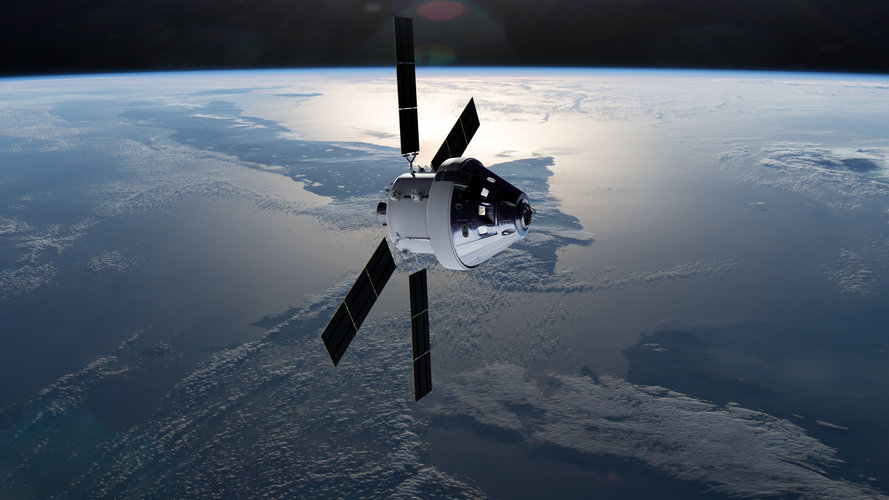
ESA has involved ten European countries in the development of the European Service Module which is part of NASA’s Orion spacecraft soon to launch to the Moon from NASA’s Kennedy Space Center in Florida. Four European small and medium-sized enterprises (SMEs) took part.
Columbus, Kibo and a Dragon | Cosmic Kiss 360°
Monday, 21 February 2022 08:00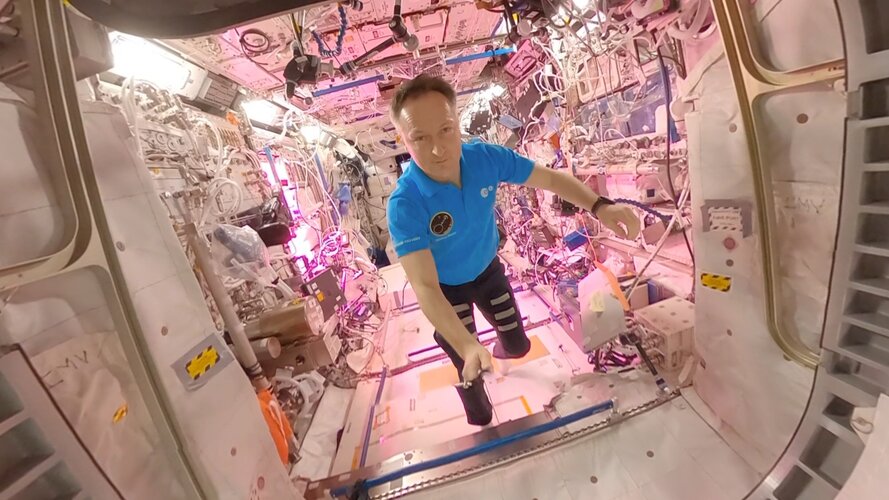 Video:
00:06:06
Video:
00:06:06
Join ESA astronaut Matthias Maurer on a 360° fly-through of Europe’s Columbus laboratory, Japan’s Kibo Module and the Crew Dragon capsule on the International Space Station.
Matthias has been living and working on the International Space Station for around 100 days, following the launch of Crew-3 from NASA’s Kennedy Space Center in Florida on 11 November 2021. He will spend approximately six months in orbit for his Cosmic Kiss mission. Much of this time is being spent inside the Columbus lab supporting European and international science.
Columbus is ESA’s single largest contribution to the International Space Station and was
European Union lays out plan to bolster space traffic management capabilities
Sunday, 20 February 2022 23:55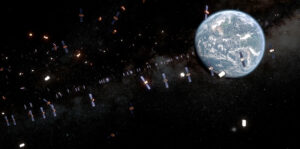
The European Union is rolling out a new space traffic management initiative to build up its abilities in the field while working with both the United States and the United Nations.
The post European Union lays out plan to bolster space traffic management capabilities appeared first on SpaceNews.
State Fight: Michigan economic plan emphasizes satellite communications
Sunday, 20 February 2022 17:01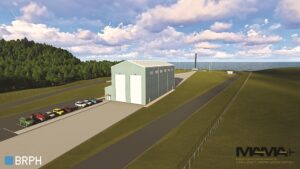
The Michigan Aerospace Manufacturers Association is working to build Michigan’s space sector through projects like Space Enabled Connectivity for Advanced Mobility or SECAM.
The post State Fight: Michigan economic plan emphasizes satellite communications appeared first on SpaceNews.
State Fight: Shoring up Florida’s Space Coast
Sunday, 20 February 2022 17:00
The Sunshine State’s efforts to lure commercial space ventures began well before the sun set on the Space Shuttle era.
The post State Fight: Shoring up Florida’s Space Coast appeared first on SpaceNews.
A Sol in the Life of a Rover
Sunday, 20 February 2022 11:57 What does Percy do all day? A Martian day- or Sol- is 24 hours and 37 minutes long, and while every Sol is different, each one is packed full of exciting science activities, observations, and discoveries! Let's follow Percy on Sol 345 (February 8th, 2022) to catch a glimpse into the daily life of a Martian explorer.
Percy woke up early in the morning at 02:07 LMST (Local Mean Solar Time on
What does Percy do all day? A Martian day- or Sol- is 24 hours and 37 minutes long, and while every Sol is different, each one is packed full of exciting science activities, observations, and discoveries! Let's follow Percy on Sol 345 (February 8th, 2022) to catch a glimpse into the daily life of a Martian explorer.
Percy woke up early in the morning at 02:07 LMST (Local Mean Solar Time on Brains of cosmonauts get 'rewired' to adapt to long-term space missions, study finds
Sunday, 20 February 2022 11:57 A new study published in Frontiers in Neural Circuits is the first to analyze the structural connectivity changes that happen in the brain after long-duration spaceflight. The results show significant microstructural changes in several white matter tracts such as the sensorimotor tracts. The study can form a basis for future research into the full scope of brain changes during human space explor
A new study published in Frontiers in Neural Circuits is the first to analyze the structural connectivity changes that happen in the brain after long-duration spaceflight. The results show significant microstructural changes in several white matter tracts such as the sensorimotor tracts. The study can form a basis for future research into the full scope of brain changes during human space explor China's Chang'e-4 discovers glass globules on far side of moon
Sunday, 20 February 2022 11:57 The Yutu-2 lunar rover of China's Chang'e-4 mission has discovered two macroscopic translucent glass globules during its exploration of the far side of the moon, which could potentially help reveal the moon's early impact history.
According to a study published in Science Bulletin, the Yutu-2 rover captured images of two translucent globules using its panoramic camera.
No composition
The Yutu-2 lunar rover of China's Chang'e-4 mission has discovered two macroscopic translucent glass globules during its exploration of the far side of the moon, which could potentially help reveal the moon's early impact history.
According to a study published in Science Bulletin, the Yutu-2 rover captured images of two translucent globules using its panoramic camera.
No composition Northrop Grumman launches cargo ship to International Space Station
Sunday, 20 February 2022 11:57 A fresh supply of 8,300 pounds of scientific investigations and cargo launched from NASA's Wallops Flight Facility in Virginia at 12:40 p.m. EST on Saturday, Feb. 19, aboard a Northrop Grumman Cygnus resupply spacecraft, and is now traveling to the International Space Station.
The Cygnus spacecraft, which was launched on an Antares rocket, is scheduled to arrive at the space station around
A fresh supply of 8,300 pounds of scientific investigations and cargo launched from NASA's Wallops Flight Facility in Virginia at 12:40 p.m. EST on Saturday, Feb. 19, aboard a Northrop Grumman Cygnus resupply spacecraft, and is now traveling to the International Space Station.
The Cygnus spacecraft, which was launched on an Antares rocket, is scheduled to arrive at the space station around Fingerprinting minerals to better understand how they are affected by meteorite collisions
Sunday, 20 February 2022 11:57 When a space rock survives the turbulent passage through Earth's atmosphere and strikes the surface, it generates shockwaves that can compress and transform minerals in the planet's crust. Since these changes depend on the pressure produced upon impact, experts can use features in Earth's minerals to learn about the meteorite's life story, from the moment of collision all the way back to the con
When a space rock survives the turbulent passage through Earth's atmosphere and strikes the surface, it generates shockwaves that can compress and transform minerals in the planet's crust. Since these changes depend on the pressure produced upon impact, experts can use features in Earth's minerals to learn about the meteorite's life story, from the moment of collision all the way back to the con NRAO and Optisys Partner Up to Produce 3D Devices for Radio Astronomy
Sunday, 20 February 2022 11:57 Recent advancements in 3D printing (also known as additive manufacturing) for metallic structures make it possible to print all-metal electromagnetic devices-like antennas and waveguides-on demand. A new partnership between the National Radio Astronomy Observatory, headquartered in Charlottesville, Virginia, and Optisys, LLC, headquartered in West Valley City, Utah, will explore the potential fo
Recent advancements in 3D printing (also known as additive manufacturing) for metallic structures make it possible to print all-metal electromagnetic devices-like antennas and waveguides-on demand. A new partnership between the National Radio Astronomy Observatory, headquartered in Charlottesville, Virginia, and Optisys, LLC, headquartered in West Valley City, Utah, will explore the potential fo NOAA's GOES-T Satellite Road to Launch: Final Preparations
Sunday, 20 February 2022 11:57 NOAA's GOES-T, the third in the GOES-R Series of advanced weather observing and environmental monitoring satellites, arrived in Florida on November 10, 2021, to begin final preparations for launch.
GOES-T is scheduled to launch aboard an Atlas V 541 rocket from Space Launch Complex 41 at Cape Canaveral Space Force Station, Florida on March 1, 2022, joining its sister satellite, GOES-16.
NOAA's GOES-T, the third in the GOES-R Series of advanced weather observing and environmental monitoring satellites, arrived in Florida on November 10, 2021, to begin final preparations for launch.
GOES-T is scheduled to launch aboard an Atlas V 541 rocket from Space Launch Complex 41 at Cape Canaveral Space Force Station, Florida on March 1, 2022, joining its sister satellite, GOES-16. Musk donates satellite gear to reconnect Tonga
Sunday, 20 February 2022 11:57 Tonga says space entrepreneur and Tesla founder Elon Musk has donated 50 satellite terminals to help the volcano-damaged Pacific island reconnect with the world.
Tonga's telecommunications system has been severely restricted since January 15 when a violent volcanic eruption and tsunami severed its underwater fibre-optic cable.
Musk's Space X corporation is providing 50 very-small-apertu
Tonga says space entrepreneur and Tesla founder Elon Musk has donated 50 satellite terminals to help the volcano-damaged Pacific island reconnect with the world.
Tonga's telecommunications system has been severely restricted since January 15 when a violent volcanic eruption and tsunami severed its underwater fibre-optic cable.
Musk's Space X corporation is providing 50 very-small-apertu Antares launches Cygnus cargo spacecraft to ISS
Saturday, 19 February 2022 17:15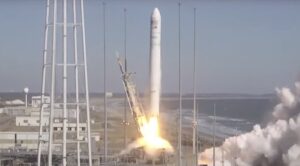
A Northrop Grumman Antares rocket launched a Cygnus cargo spacecraft carrying several tons of cargo for the International Space Station Feb. 19.
The post Antares launches Cygnus cargo spacecraft to ISS appeared first on SpaceNews.
State Fight: SpaceX brings business to Brownsville, Texas
Saturday, 19 February 2022 16:20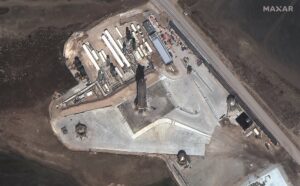
At the outset of the coronavirus pandemic, city officials in Brownsville, Texas, anticipated sales and property tax revenue declines. To their surprise, residential property values and sales tax collections have continued to climb. Much of the credit goes to SpaceX.
